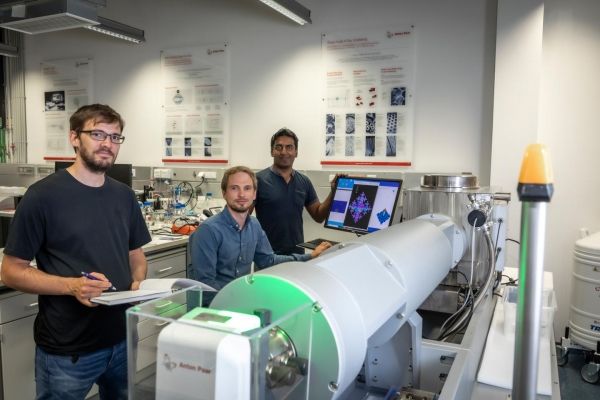Limited safety, sustainability and recyclability are key drawbacks of today's lithium-ion battery technology, along with restricted availability of starting materials (e.g. cobalt). In the search for alternative electrochemical energy storage systems for use in e-mobility and for storing energy from renewable sources, a combination of battery and capacitor is very promising: the "hybrid supercapacitor". It can be charged and discharged as quickly as a capacitor and can store almost as much energy as conventional batteries. In comparison to the latter, it can be charged and discharged much faster and much more frequently: while a lithium-ion battery achieves a service life of a few thousand cycles, a supercapacitor manages around one million charging cycles.
System made of carbon and salt water
A particularly sustainable, but so far quite unexplored variant of such a hybrid supercapacitor consists of carbon and aqueous sodium iodide (NaI) electrolyte, with a positive battery electrode and a negative supercapacitor electrode. Researchers at Graz University of Technology have now investigated in more detail how exactly the electrochemical energy storage in this supercapacitor works and what happens in the nanometer-sized pores of the carbon electrode, and have recently published their promising results in the scientific journal Nature Communications. "The system we are looking at in detail consists of nanoporous carbon electrodes and an aqueous sodium iodide electrolyte, in other words salt water. This makes this system particularly environmentally friendly, cost-effective, incombustible and easy to recycle," explains Christian Prehal. He is the first author of the study and has recently moved from the Institute of Chemistry and Technology of Materials at TU Graz to ETH Zurich.
Read more at: Graz University of Technology
Harald Fitzek, Christian Prehal and Qamar Abbas (from left) at the SAXS facility SAXSpoint 2.0 (Anton Paar GmbH): With their work at Graz University of Technology, the researchers are providing new insights into hybrid supercapacitors. (Photo Credit: © Lunghammer - TU Graz)


